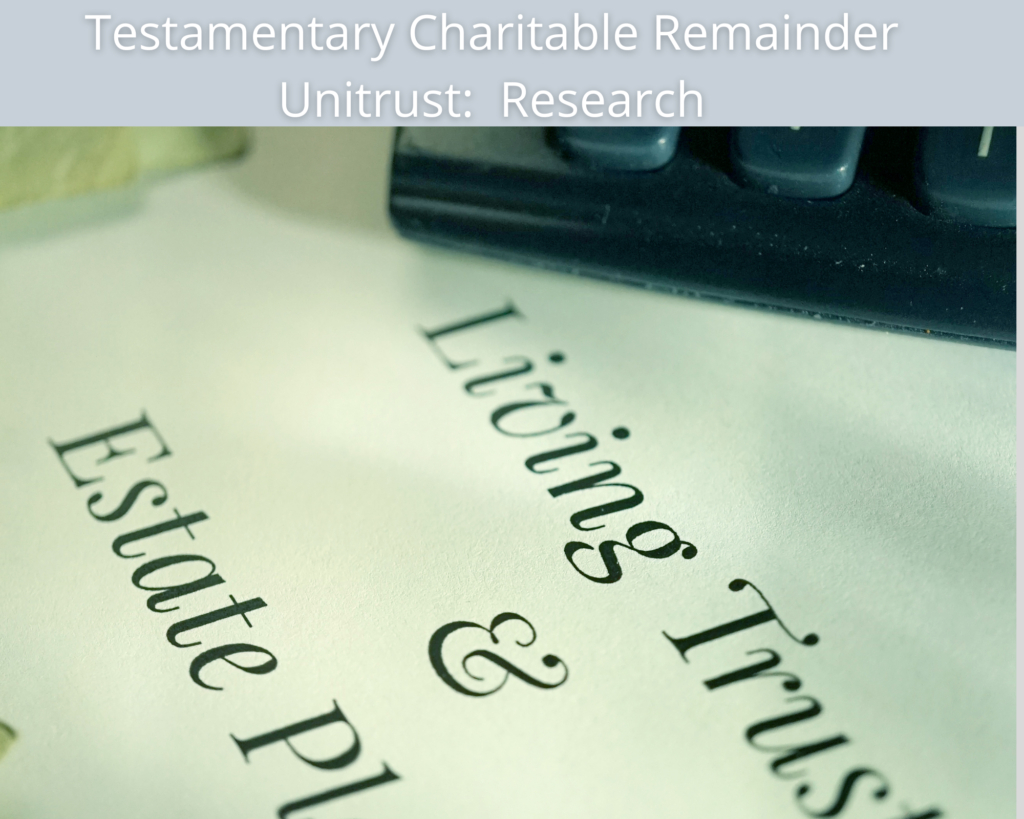The specific interest in a testamentary charitable remainder unitrust most often with donors who want to their retirement assets, such as IRA’s, to their children or other loved ones with the ability to still “stretch” the annual distribution over the life of the beneficiaries.
The IRS Specimen documents for a TCRUT were created assuming that the “funding source” of assets to fund the TCRUT will come from the donor’s last will or revocable living trust. Since most professionals recommend the funding source be an IRA via beneficiary designation, this technique would create a stand-alone or “dry” trust. Therefore our software drafts the TCRUT as a revocable trust during the life of the donor/grantor and becomes irrevocable at the donor’s passing.
Note that if you are trying to fund the TCRUT with the donor’s last will or revocable living trust, you can still set it up initially as a revocable trust, as we have done, assuming most of the TCRUTs will be funded via beneficiary designation, however, if you are more comfortable setting up immediately as an irrevocable trust than you can substitute the langue in article 1 with the IRS Specimen language.

Rev. Proc. 2005-58: Testamentary Charitable Remainder Unitrust, two lives, consecutive interests
Rev. Proc. 2005-59: Testamentary Charitable Remainder Unitrust, concurrent and consecutive interests
An important article written by Tim Prosser at TIAA-Kaspick addresses the approach to creating a Testamentary CRT to make sure it’s effectively funded. This paper is especially helpful in addressing how a testator can leave retirement assets to a TCRT properly.